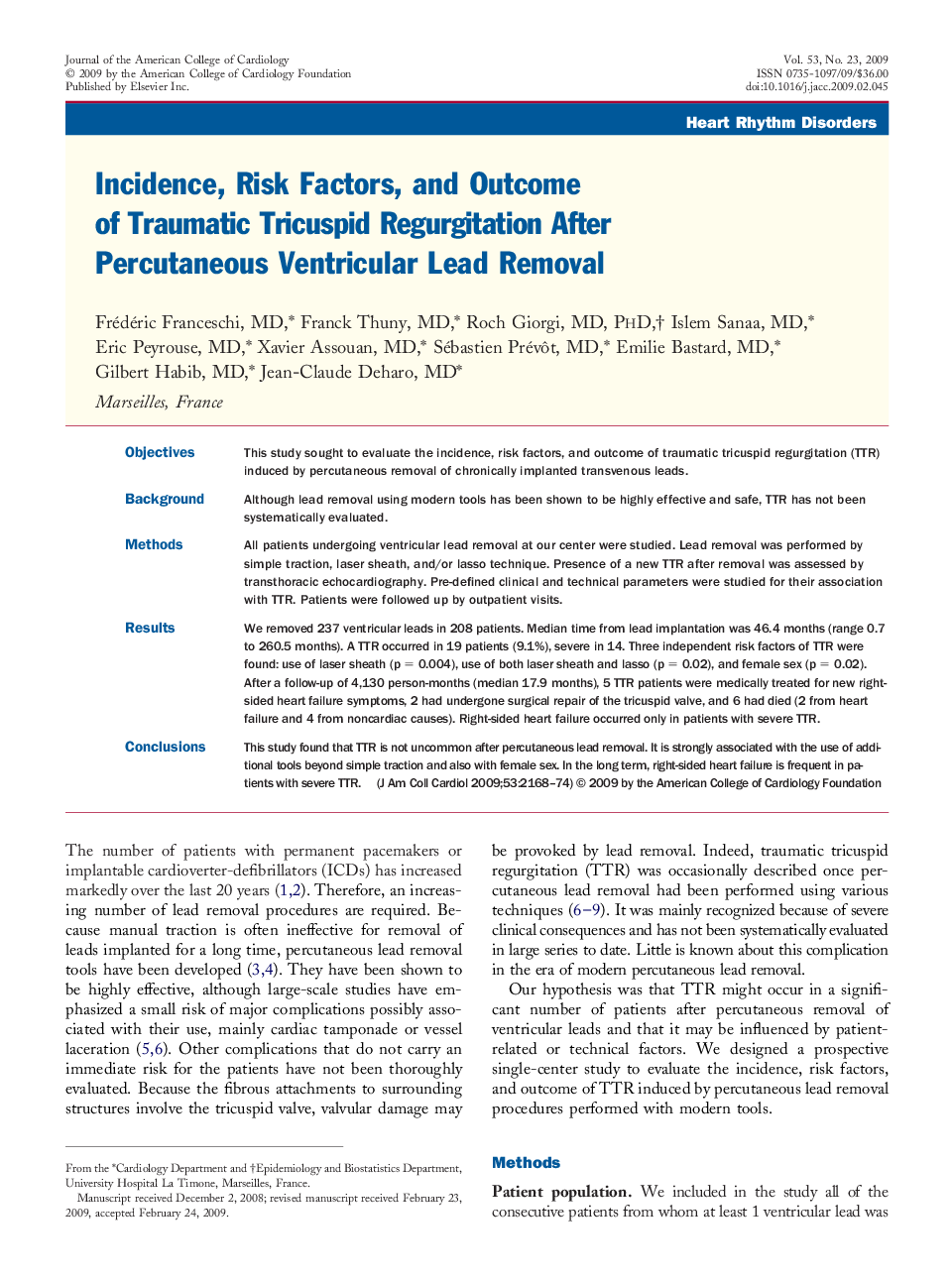| Article ID | Journal | Published Year | Pages | File Type |
|---|---|---|---|---|
| 2951295 | Journal of the American College of Cardiology | 2009 | 7 Pages |
ObjectivesThis study sought to evaluate the incidence, risk factors, and outcome of traumatic tricuspid regurgitation (TTR) induced by percutaneous removal of chronically implanted transvenous leads.BackgroundAlthough lead removal using modern tools has been shown to be highly effective and safe, TTR has not been systematically evaluated.MethodsAll patients undergoing ventricular lead removal at our center were studied. Lead removal was performed by simple traction, laser sheath, and/or lasso technique. Presence of a new TTR after removal was assessed by transthoracic echocardiography. Pre-defined clinical and technical parameters were studied for their association with TTR. Patients were followed up by outpatient visits.ResultsWe removed 237 ventricular leads in 208 patients. Median time from lead implantation was 46.4 months (range 0.7 to 260.5 months). A TTR occurred in 19 patients (9.1%), severe in 14. Three independent risk factors of TTR were found: use of laser sheath (p = 0.004), use of both laser sheath and lasso (p = 0.02), and female sex (p = 0.02). After a follow-up of 4,130 person-months (median 17.9 months), 5 TTR patients were medically treated for new right-sided heart failure symptoms, 2 had undergone surgical repair of the tricuspid valve, and 6 had died (2 from heart failure and 4 from noncardiac causes). Right-sided heart failure occurred only in patients with severe TTR.ConclusionsThis study found that TTR is not uncommon after percutaneous lead removal. It is strongly associated with the use of additional tools beyond simple traction and also with female sex. In the long term, right-sided heart failure is frequent in patients with severe TTR.
